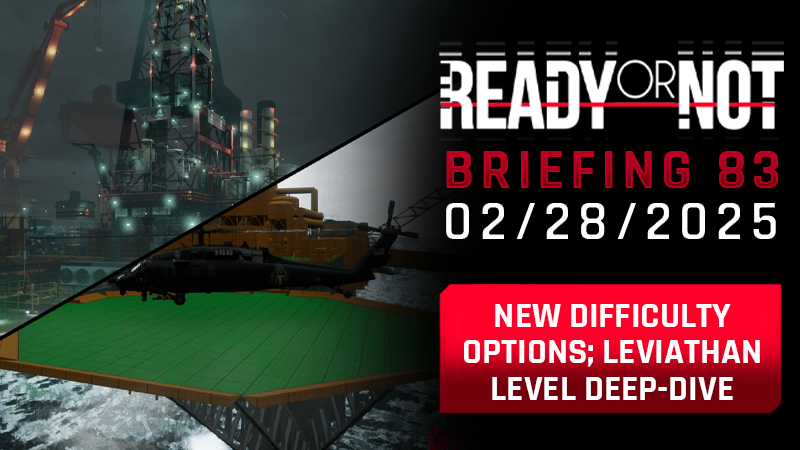Welcome to our 83rd Ready or Not Development Briefing on February 28th, 2025!
After years of fine-tuning, we’ve now established a mature state of difficulty for Ready or Not. Each player has their unique preferences on how this should be, and we’re excited to bring a renewed focus. Read below to explore our approach to the soon-to-arrive new difficulty mode system, offering ‘Casual,’ ‘Standard,’ and ‘Hard’. We’ll also delve into how we are using measurable player feedback to guide future development.
We were thrilled by the feedback on our previous dev briefing, where we delved into our design ideology for the Home Invasion levels and Ready or Not overall. This was particularly exciting for our modding community and those pursuing game development! Those curious about our level design process will find the second half of this dev briefing insightful, as it deconstructs our “Leviathan” mission from Dark Waters with insights from our Level Designer, Tisa!
Note: These development briefings aim to keep you informed about the ongoing support for Ready or Not, although they do not cover everything in our current development pipeline. Please be aware that the content in our development briefings may be in progress and subject to change.
Our game’s difficulty level is now in a more advanced phase, with a growing player base and continuously refining player skills. We’ve reached a point where it is beneficial to enhance the standard difficulty experience, offering officers the choice to ease in or take on more significant challenges.
Introducing our upcoming difficulty tuning system, featuring ‘Casual,’ ‘Standard,’ and ‘Hard’ modes.
This involves a detailed evaluation of numerous variables affecting Civilians, Suspects, and SWAT officers on a per-mission basis. The system is still in development, preparing for internal testing. Therefore, some aspects may be refined, and we will not disclose all potential values being assessed.
Details will be shared once these modes are launched, along with changelogs!
Note that unlocking specific achievements may necessitate playing on certain difficulty modes, such as the ‘Standard’ or ‘Hard’ levels.
- ‘Casual’: Offers a more accessible introductory difficulty for players who are new to the game and the genre.
- ‘Standard’: Provides a balanced challenge for officers, intended to deliver a gratifying and thoughtful experience. This mode is a slightly polished version of the existing difficulty settings.
- ‘Hard’: Presents a heightened challenge beyond ‘Standard’, emphasizing teamwork and strategic decision-making.
Overall, the difficulty modes will adjust parameters like reaction time, surrender likelihood, movement accuracy, distance precision, and much more. Particularly for suspects, alterations to their threat level, reaction times, and values influencing their “time to kill” the player, as well as adjustments to traps and engagement rules, are all possibilities.
This flexibility in setting difficulty values both globally and per mission allows us to adjust the challenge to fit the context of each mission.
For instance, we can modify the maximum number of suspects in a level but might refrain from increasing them for levels requiring a specific number for storyline or gameplay reasons—focusing instead on different methods to adjust the mission’s difficulty.
We appreciate your input in our recent AI sentiment survey, with over 13,000 responses collected during its availability! The data has been collated into internal documents and disseminated across relevant departments, armed with graphs and analytical commentary to serve as a useful resource for future use.
This survey data complements feedback from other social platforms, including our Discord group.
We’ve integrated new metrics to help us better understand overall player activity (telemetry), such as the number of players engaging with specific DLC, the game version they’re using, and measuring player retention. This insight will also reveal how effective our development efforts are.
The telemetry process does not collect or use personally identifiable information, maintaining anonymized data that cannot be reverse-engineered—similarly to previous practices, we don’t gather personal data from the start.
Continuing our level design insights series, today we’re giving you a sneak peek into the creation of Leviathan, courtesy of our level design team, particularly Tisa!
With the development of the “Leviathan“ mission, we aimed to offer a scenario deviating significantly from our standard missions while maintaining the core Ready or Not gameplay essence. Specifically, we sought to immerse players in a cold, wet, dark, steel-like environment, far removed from known coastlines, with enormous ocean waves crashing around them.
The Rig HeavyWell A-101 is the first rig authorized to extract from the precious oil reserve off the Los Suenos coast. The battle over drilling licenses, coupled with the rig’s construction and operations, has sparked heated debates in Los Suenos since the first permit applications were filed.
The UPF, an eco-terrorist faction, has attacked the rig and taken workers hostage. They are highly aggressive, firing without hesitation. Some crew members are injured or deceased. Hostages have been rounded up in several rig sections.
The LSPD SWAT has jurisdiction over the rig—following an amendment to the Adjacent State Rule of the Outer Continental Shelf Lands Act—and has been dispatched to handle the situation.
Once the level concept was finalized, we commenced research, gathering references from offshore oil rigs, both large and small.
Our aim was to ground the environment and the purpose of each room as accurately as possible, by researching the specific machinery and tools typically used on offshore oil rigs.
(Images below: Illustrations of various oil rig machinery)

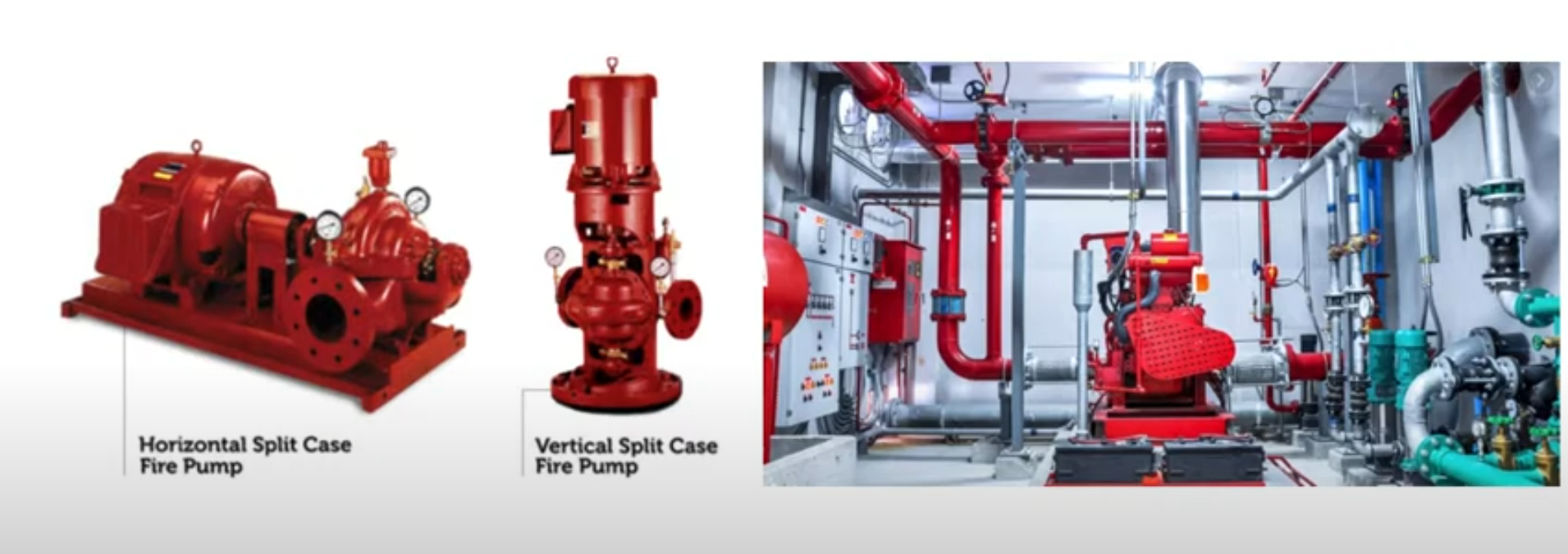
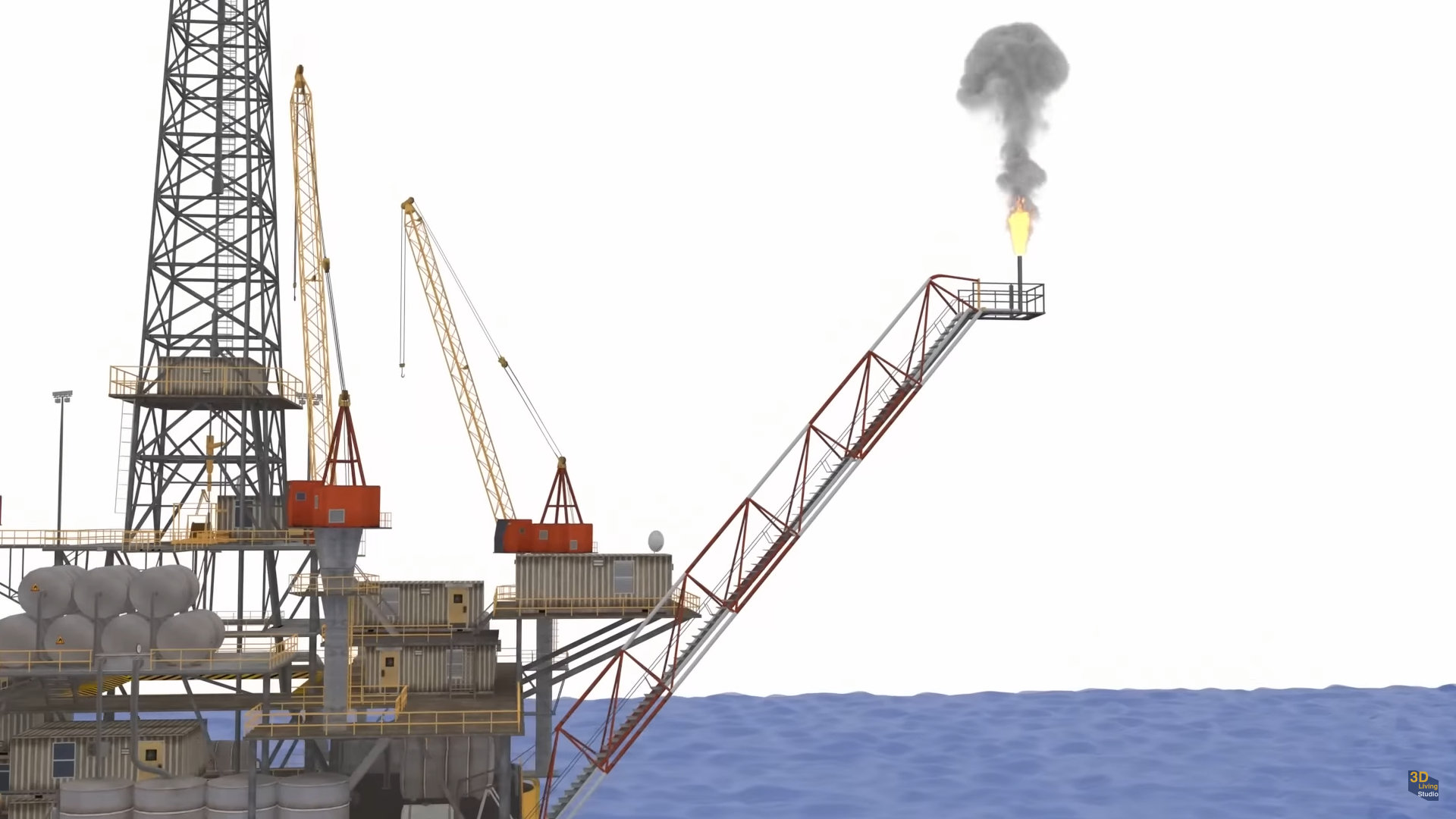
The Leviathan oil rig isn’t modeled on a single existing design but is a blend of interesting rooms discovered during our research.
(Images below: Room styles on oil rigs considered as inspiration for Leviathan)
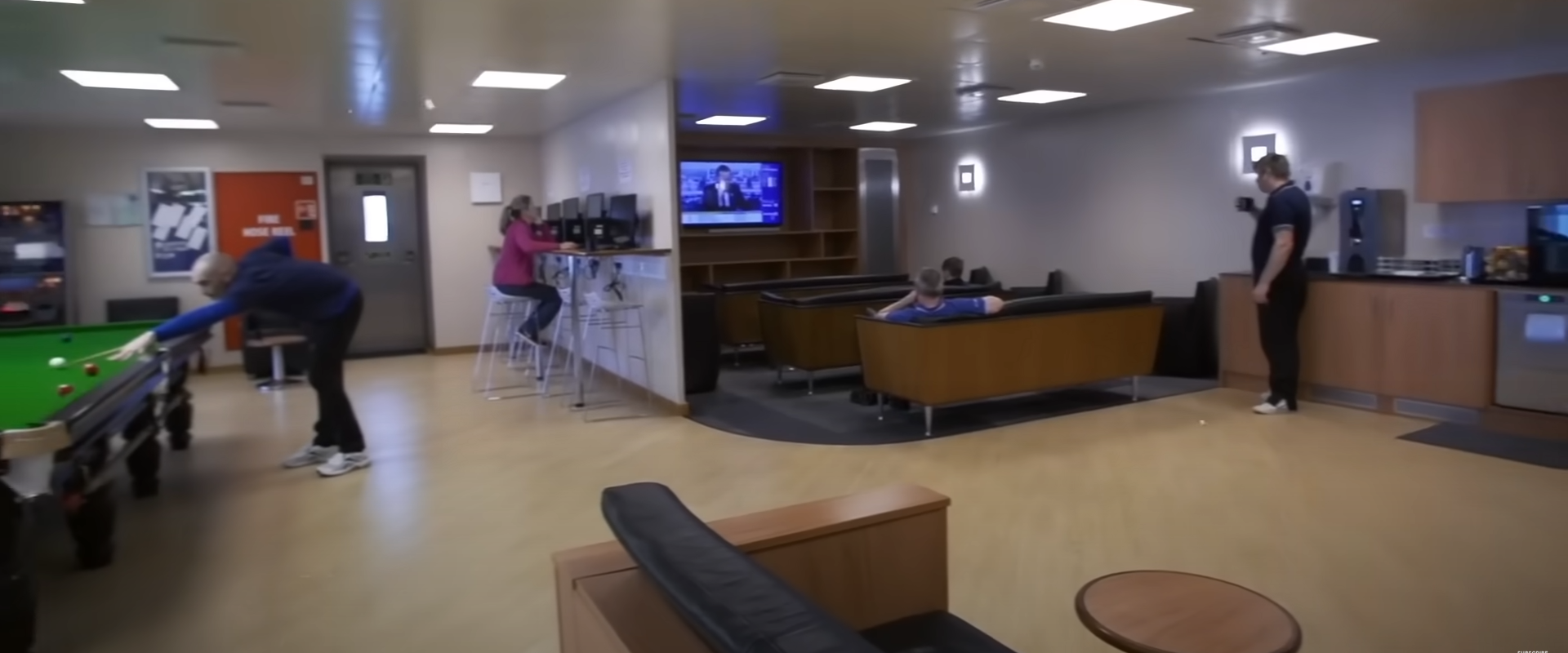
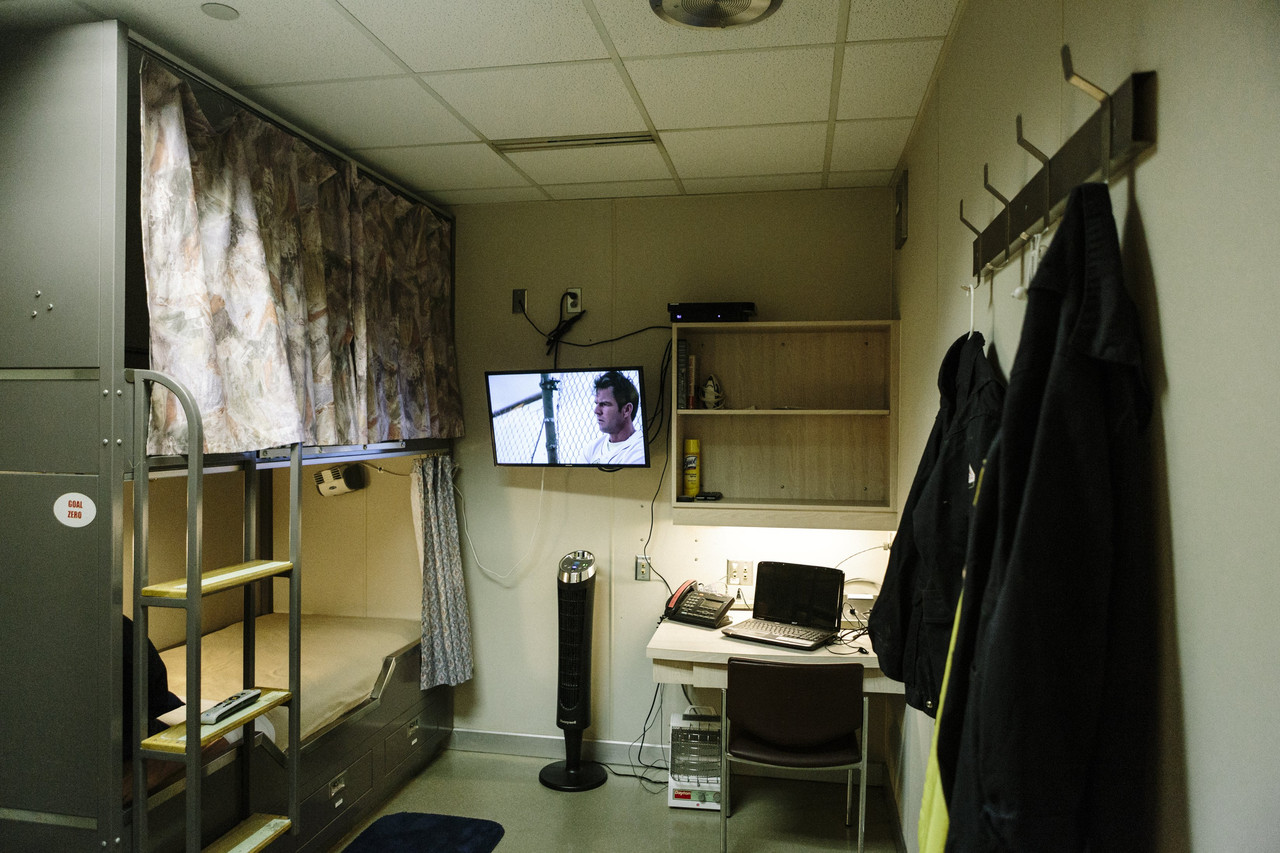
Surprisingly, the Leviathan is based on the smallest type found among real-world rigs.
(Images below: Sizes and construction features of offshore rigs, and an example of a rig size used in RoN)
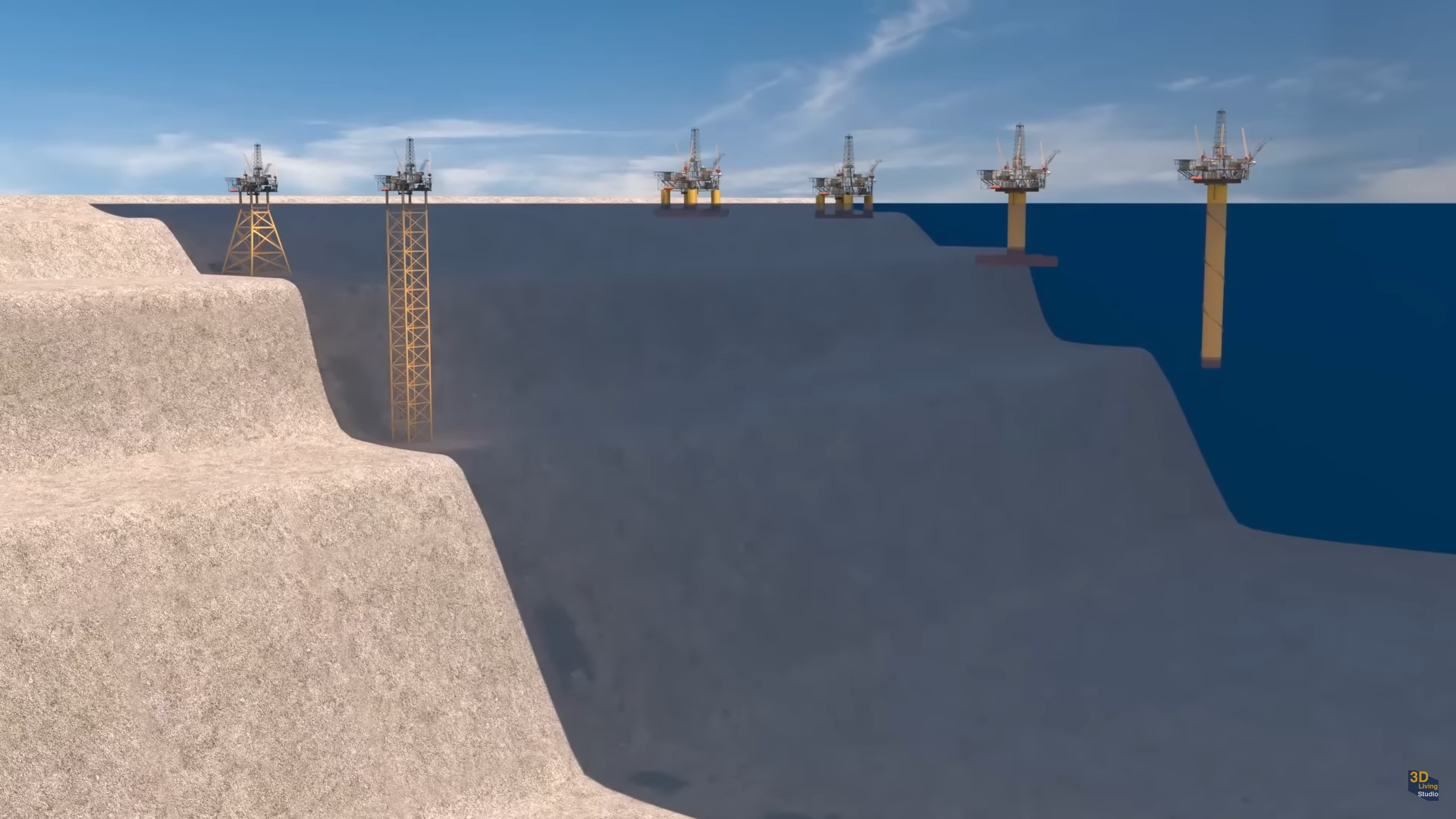

Due to the rig’s centralized main drill tower and our aim to incorporate at least two floors, I decided the level layout should follow a classic ‘arena’ style.
With the central landmark, I could design rooms and corridors around it, creating ideal loops for AI to navigate, run, and flank effectively, enhancing gameplay.
The central landmark also aids our players with orientation and navigation.
Given this multi-level setup, I wanted at least three staircases connecting floors, offering gameplay variety and preventing potential bottlenecks.
Additionally, integrating our new helicopter system required abundant open spaces outside for spotting and reporting suspects.
(Images below: Rig top-down level design layout)
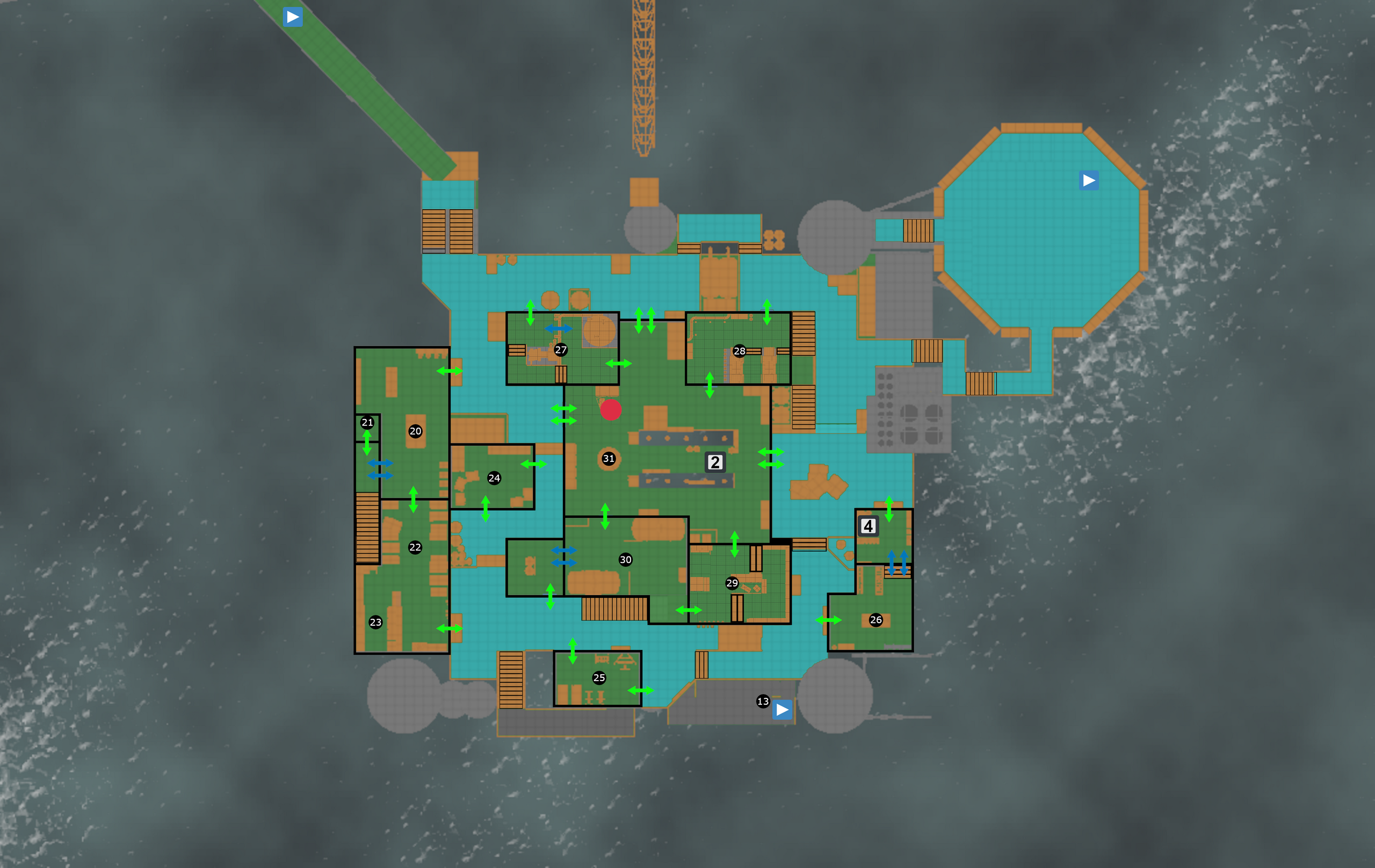
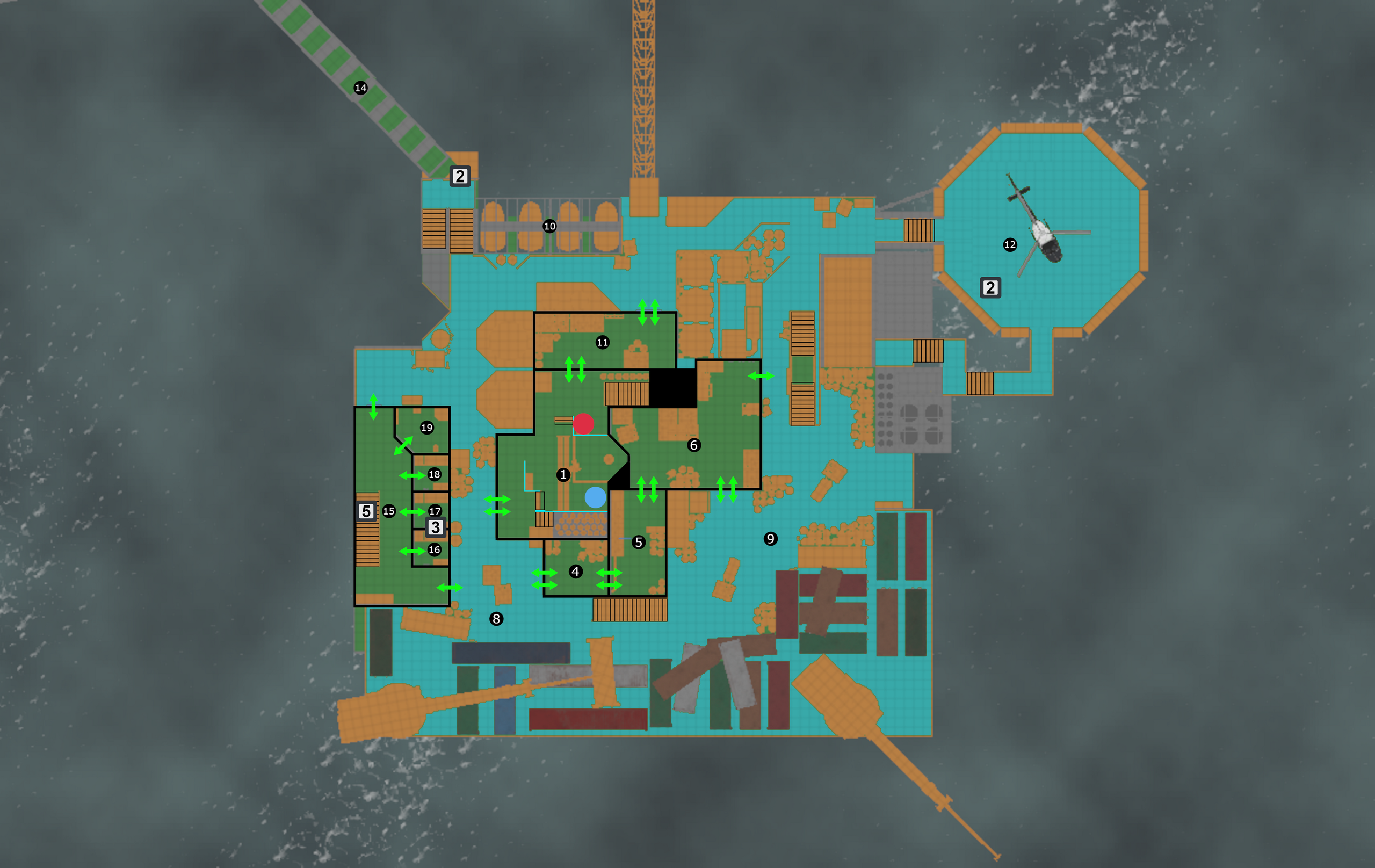
We envisioned three distinct starting points at varied heights, allowing players a unique approach each time they tackle this mission.
The first starting point is the Helipad; from the loading screen, players appear to be arriving via helicopter, seamlessly blending with their starting location.
Initially, the landing zone appears quite exposed, but the level design ensures players won’t face gunfire in the spawn area. Players spawn on the North-East side, at the highest point with both upper and lower floor access.
(Image below: Helipad starting point, with the blockout version on one half)
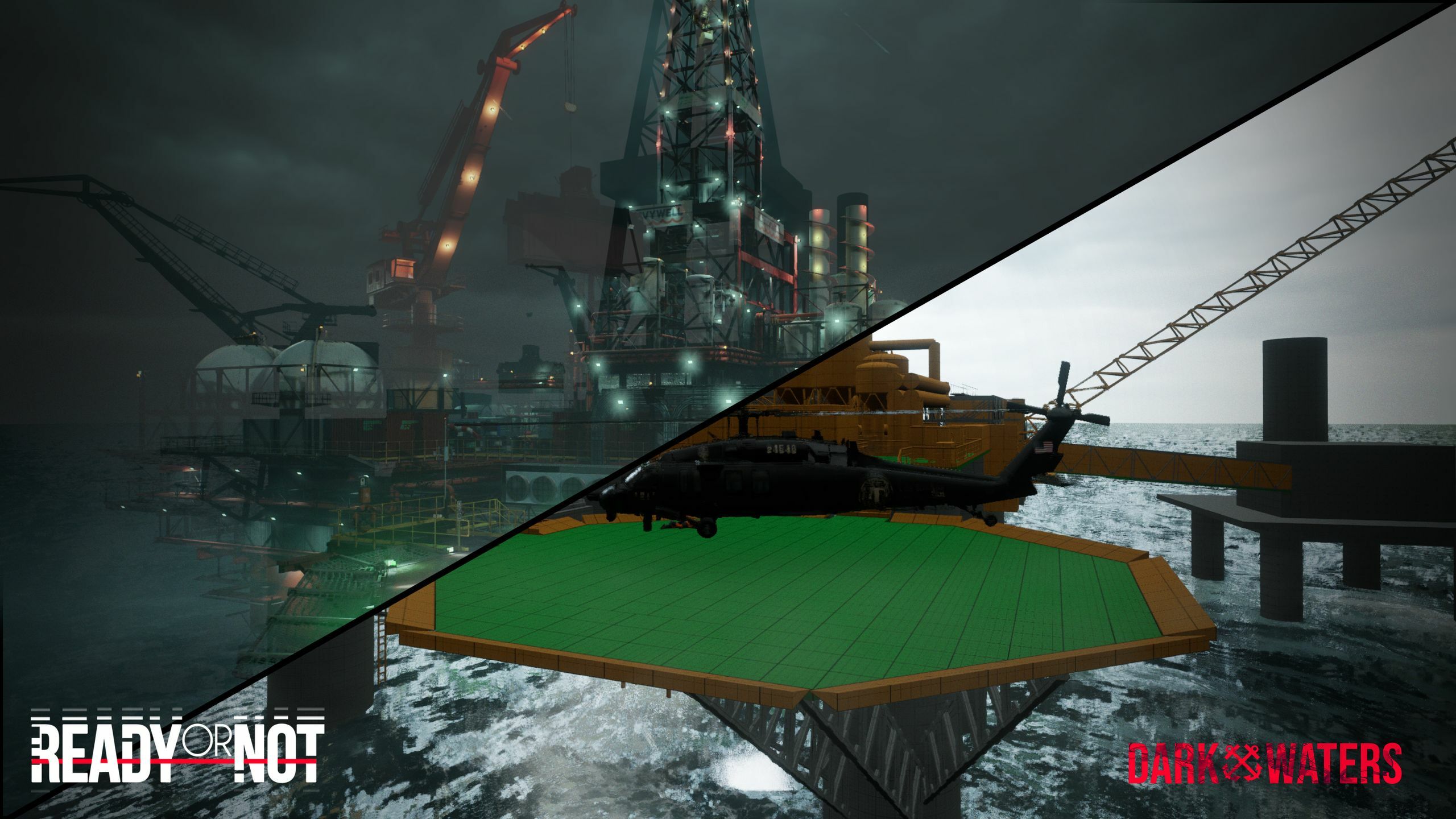
The second starting point is the Bridge.
The starting point places players on a trembling bridge connecting the main rig to a smaller extension. From here, players spawn mid-level with access to the North-West upper and lower floors.
(Image below: Bridge starting point, with a mini blockout image in the corner)
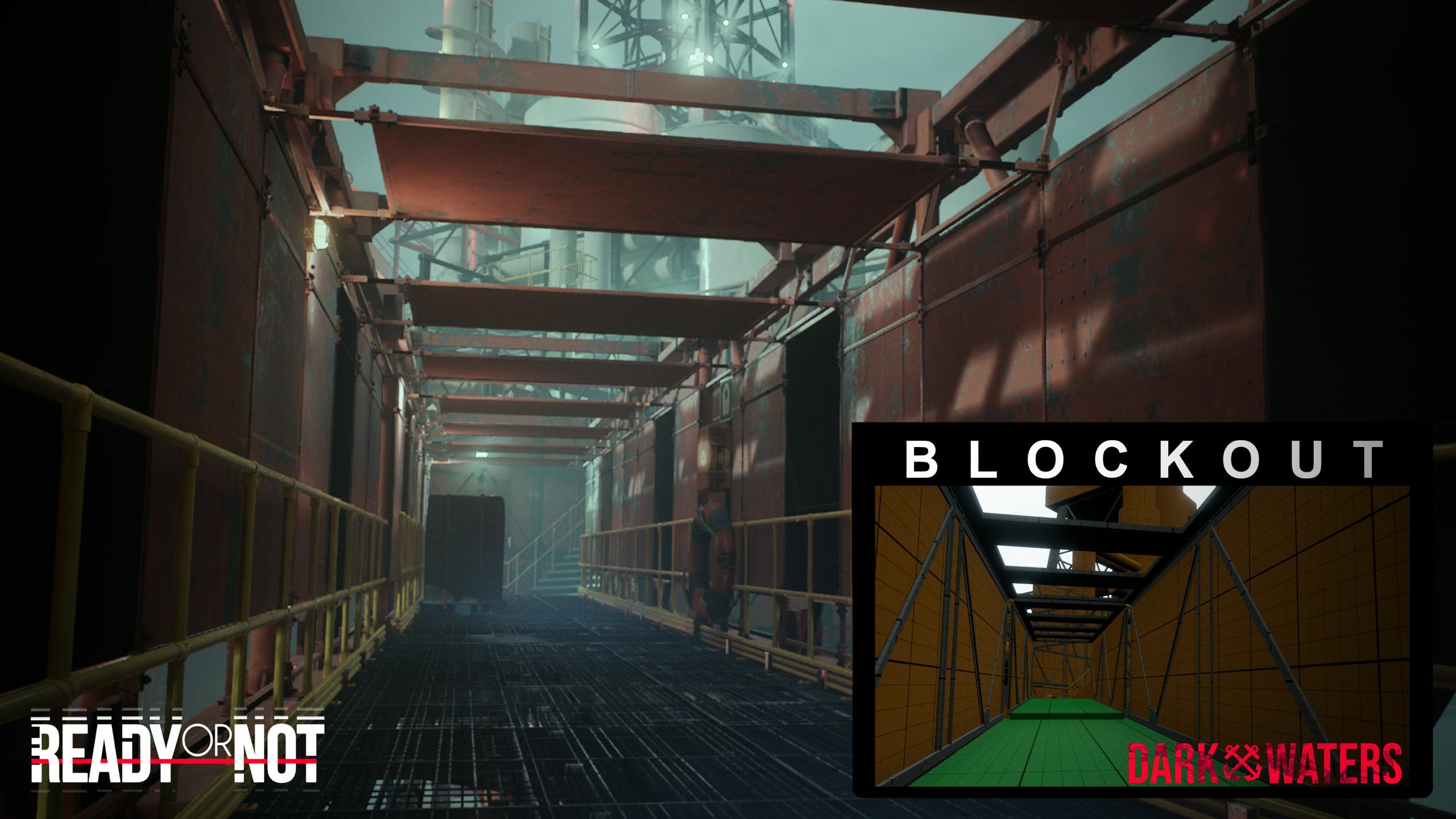
The third starting point is the Boat Landing.
In the loading screen, players see their approach by boat, which aligns perfectly with this starting spot. The location shocks players with a chilling sight of workers hanging from the rig’s lowest level, urging urgency. From this spawn, players access the South-West lower floors with left/right route options.
(Images below: Boat Landing starting point, with a mini photo of the blockout version in one image)
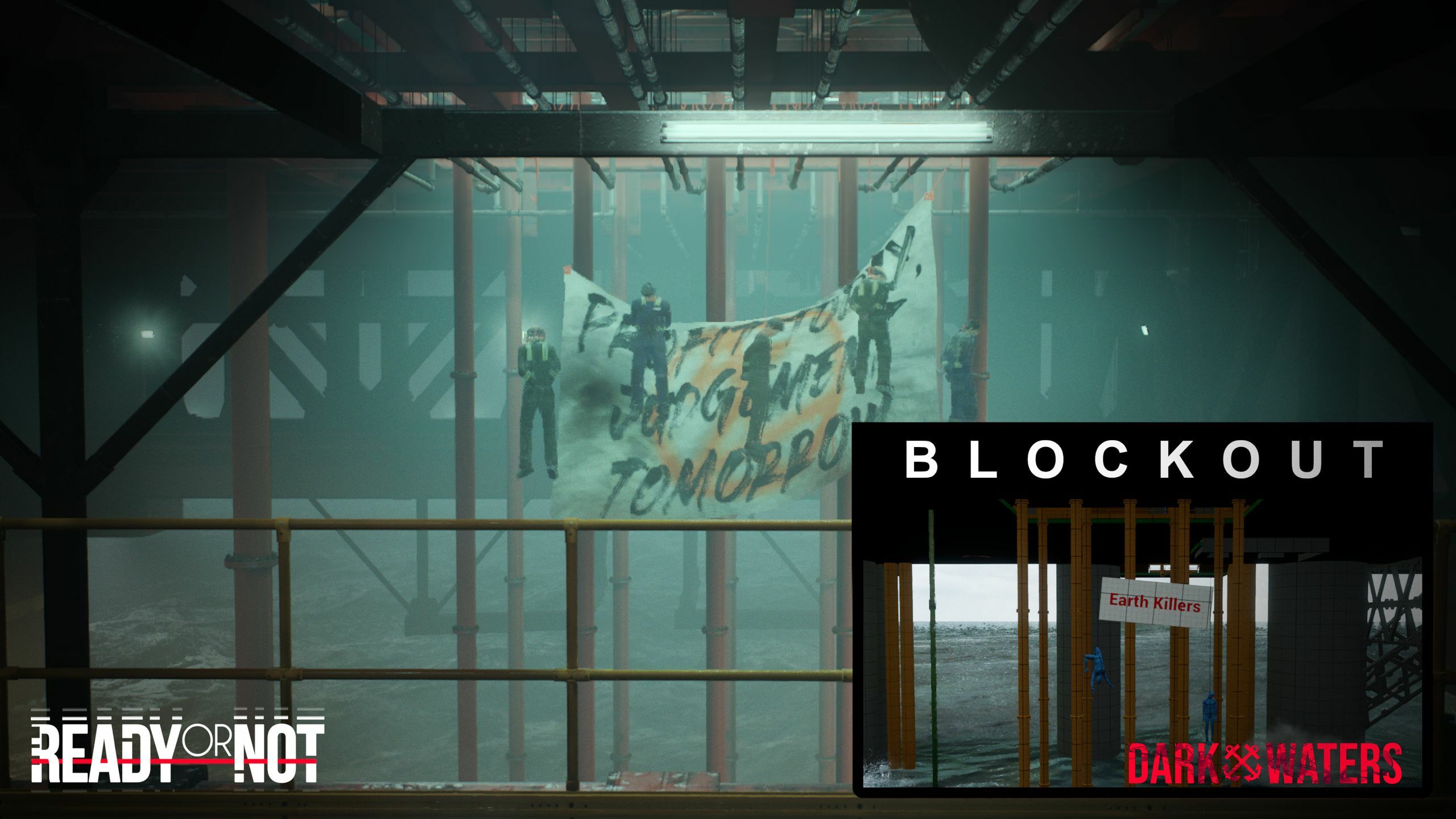
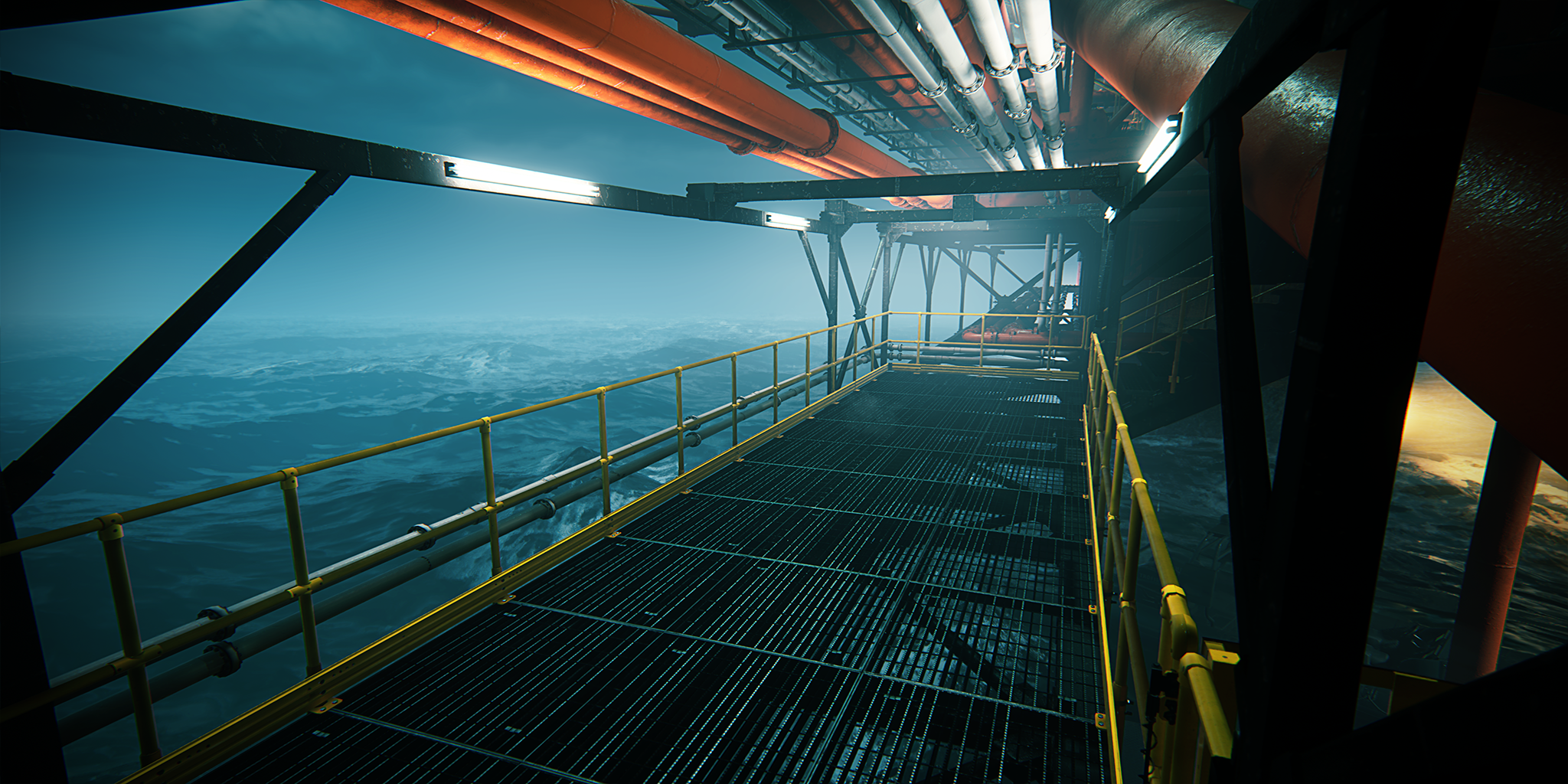
Gameplay on this map focuses heavily on CQB despite its size, with sections offering longer lines of sight. It also marks the debut of our Helicopter system, providing an aerial camera view. The helicopter identifies any suspects or civilians outside, illuminating them for easier location tracking.
Being an Arena-styled level, threats can surface from anywhere.
With that in mind, our primary aim was to stage a room overflowing with bound civilians and a few suspects as guards, increasing the challenge when clearing without civilian harm.
(Image below: Before/after illustration of a hostage room)
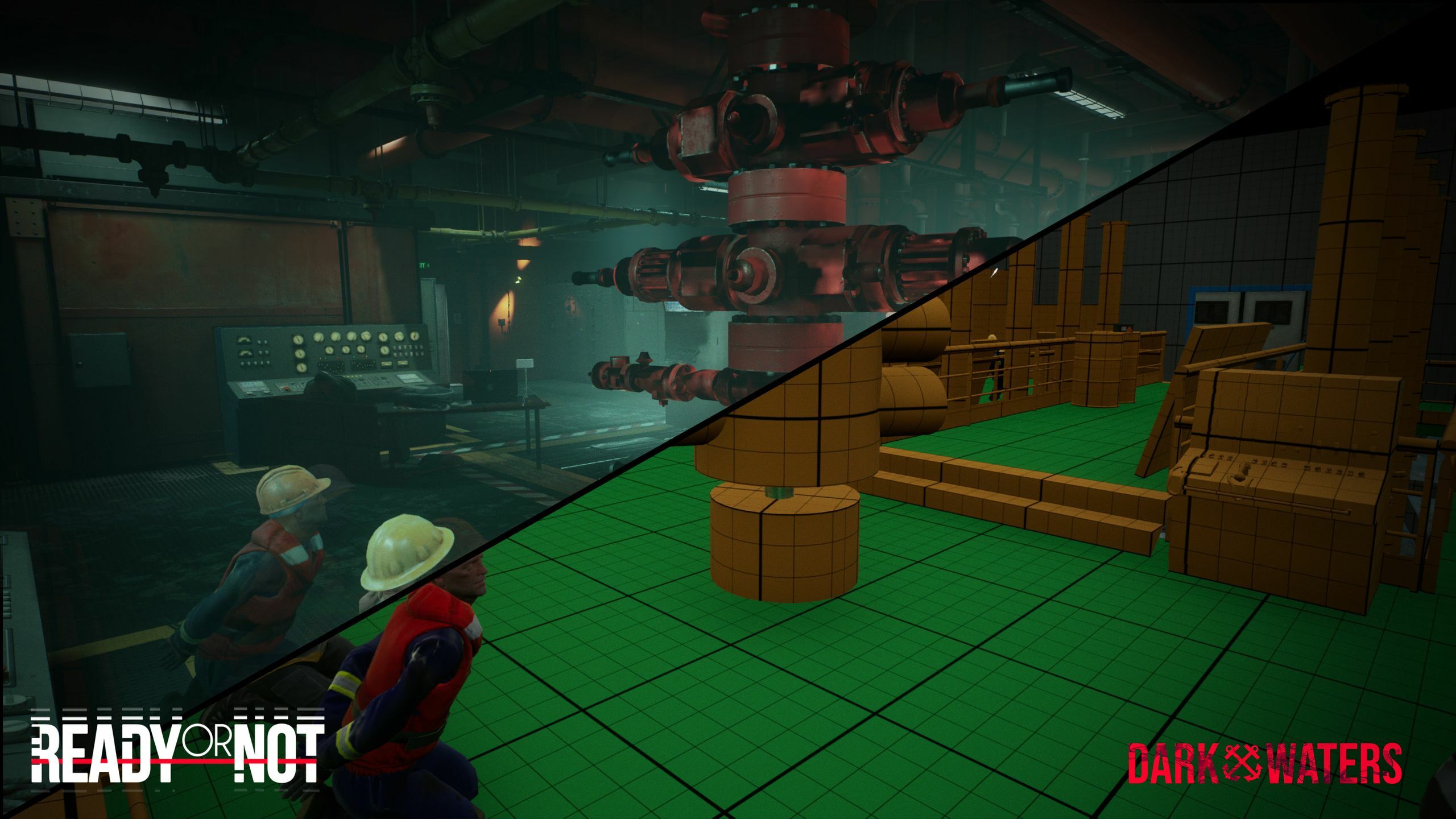
Aside from meticulous entry plans and fire control for civilians, high-pressure pipes that explode upon being shot will obstruct players’ vision throughout.
Environmental elements like raindrops on players’ vision and increased sway effects near edges further enhance immersion.
(Image below: High-pressure pipe emitting vapor)
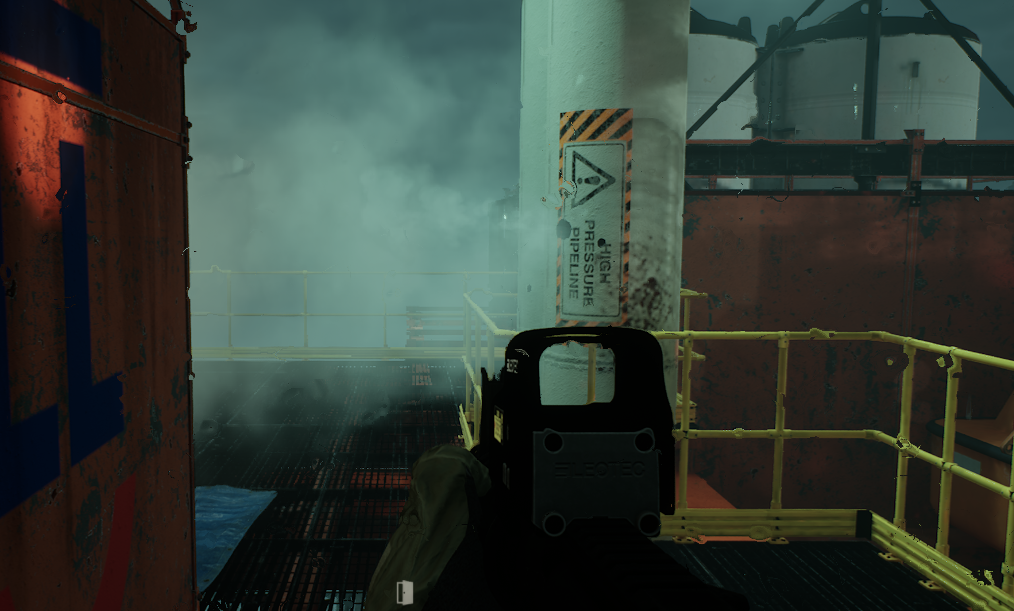
The goals for this level are as follows:
- Restore Order amidst Chaos.
- Rescue all hostages.
- Terminate the Livestream.
- Deactivate the Rig Drill.
The primary task involves stopping the UPF livestream, whose location varies randomly on the rig. The broadcast area is filled with bound rig crew hostages as well.
A hidden goal involves preventing the main drill from overheating. Players may encounter this when entering the drill room, which will sound an alarm that persists until resolved.
Interactables, which react to player actions within the level, were vital for imbibing life into this environment.
We’ll start with a reportable dead body for each spawning area, highlighting the heightened hostilities of the UPF, contrasting with their actions in previous missions.
Further immersing players, worker voice lines trigger when gunshots echo, particularly from obscured areas in crew quarters.
In the control room, players can communicate with COAST via radio, reporting on rig invasions by UPF terrorists with LSPD SWAT support.
Lastly, a hidden keycard unlocks a fire control room computer, hinting at insider collaboration with the UPF.
All these interactive elements were crafted to immerse players into the storyline while imparting the depth of the “Ready or Not” environment that we all appreciate.
New avenues to test your skills are forthcoming, as are developmental strides informed by your ongoing feedback. Together with improved telemetry, we are reinforcing our continued support of Ready or Not.
With fresh insights into Leviathan, now is a great time to dive back in (take advantage of the ongoing Steam sale on our DLC if you or your lobby host have yet to secure the Dark Waters DLC!)
This concludes our 83rd development briefing. Thank you for joining us, and stay tuned for further development updates!

Follow Ready or Not on Steam here.
Our other links: Discord, X, YouTube, Instagram, Facebook, Spotify.
